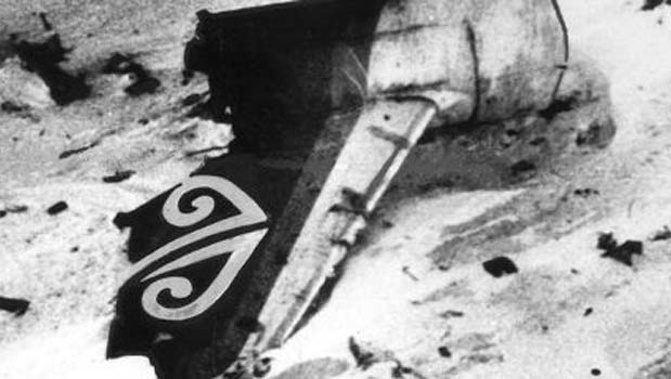
A Mt Erebus crash theory has been explored, and quickly debunked, in a new American cable TV documentary.
Mysterious markings found in Antarctica snow are linked in the programme to the Mt Erebus disaster, where all 257 people on board the sightseeing Air New Zealand Flight 901 - 237 passengers and 20 crew - were killed.
The crash of the Air New Zealand DC-10 into the slopes of the volcano on Antarctica's Ross Island on November 28, 1979, is generally considered New Zealand's worst civil disaster.
A report by Ron Chippindale initially blamed "pilot error" as the cause of the tragedy.
However, a subsequent royal commission of inquiry led by Justice Peter Mahon cleared the pilots and accused the airline of an "orchestrated litany of lies".
Mahon's report argued that the main causes of the crash were changes made to the plane's navigation computer coordinates and the whiteout conditions which made it impossible for the crew to see the mountain.
The plane's wreckage remains on the remote site.
Strange markings in the snow near the crash-site are questioned on the Science Channel's What on Earth programme and asked whether they could be "a remnant of the plane's long debris trail".
Aviation journalist Joe Pappalardo told the Science Channel: "It looks like something landed there really quickly and skidded to a halt. Maybe something had crashed here."
He added: "When you think about something crashing in that part of the world, you think about the worst air disaster in New Zealand history."
But image analyst Mark D'Antonio found that it wasn't a depression but rather something rising from the land.
Nasa glaciologist Dr Kelly Brunt visited the remote 11km-long wall of jagged ice protruding from frozen seas of McMurdo Sound.
She concluded it was a rare type of glacier called an ice tongue that was first found by Captain Robert Falcon Scott's Discovery Expedition of 1901-1904.
Air New Zealand was criticised last week for the release of its new in-flight safety video, starring Hollywood actor Adrian Grenier, that was filmed in Antarctica.
Families of the Erebus crash victims have expressed mixed emotions ranging from "offensive" to "fantastic".
"I don't think it's appropriate at all, no matter how they spin it, it's very disrespectful," said Nicholas Bennett, son of crew member David John Bennett.
But Jodi Williams, Air New Zealand general manager of global brand and content, said the new safety video has had "overwhelmingly positive feedback from customers and staff".
"In fact, we have had less negative comment about this video so far than some of the previous ones," Williams said.
"And we are pleased that so many people here and overseas are appreciating the effort we are making to put a spotlight on the importance of scientific activity that is being conducted by Kiwis in Antarctica to help understand what is happening to our planet.
"We deeply respect that Antarctica is of great significance to the families of those lost on Mt Erebus and we carefully selected the filming locations. The majority of comments we have had from immediate family members of those lost on Mt Erebus have been supportive."
Take your Radio, Podcasts and Music with you









